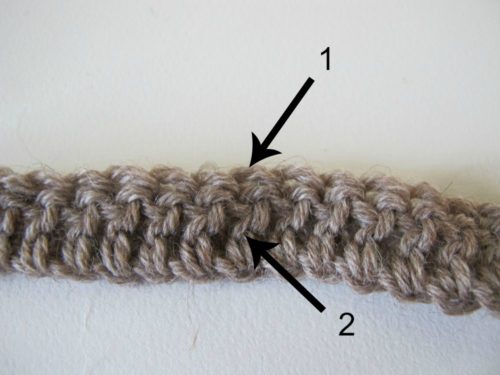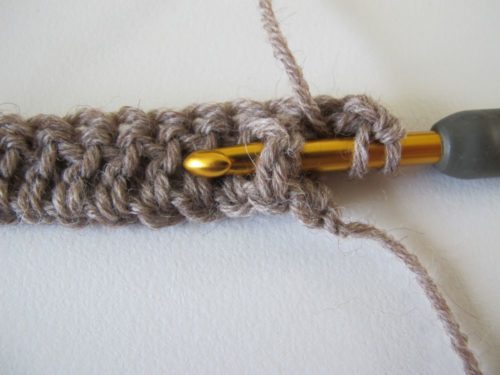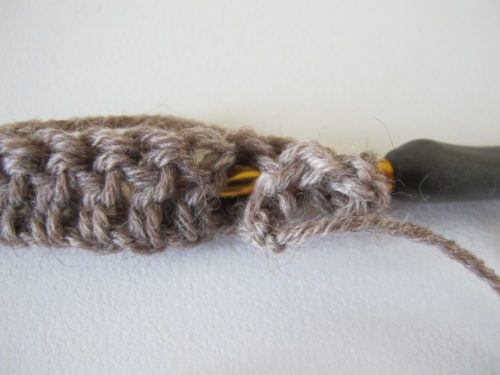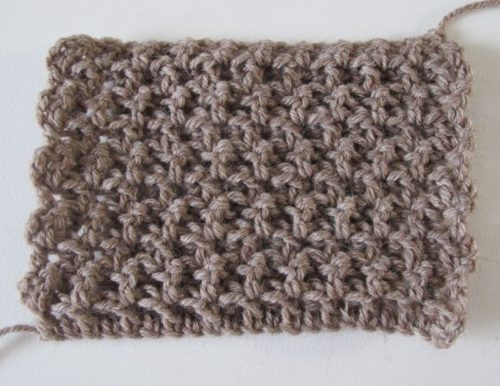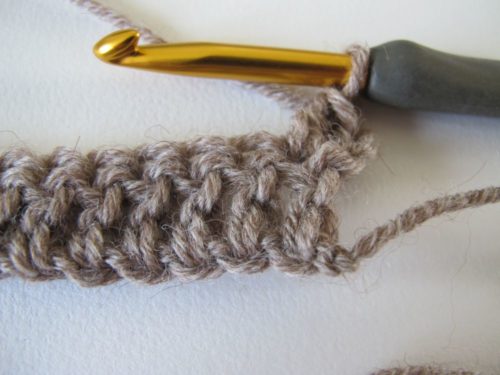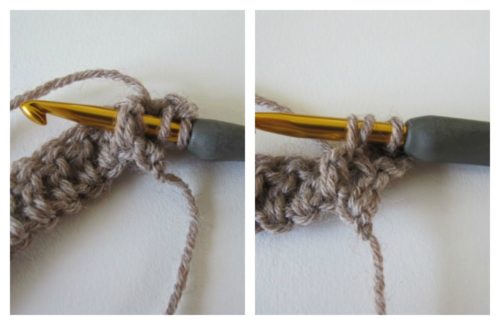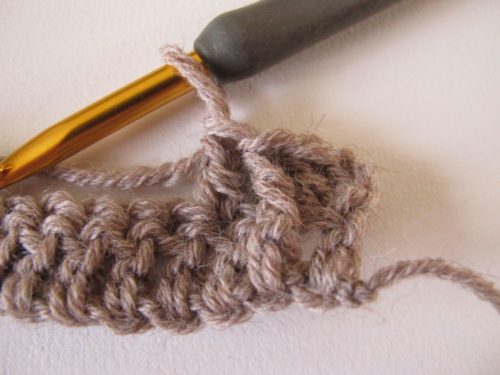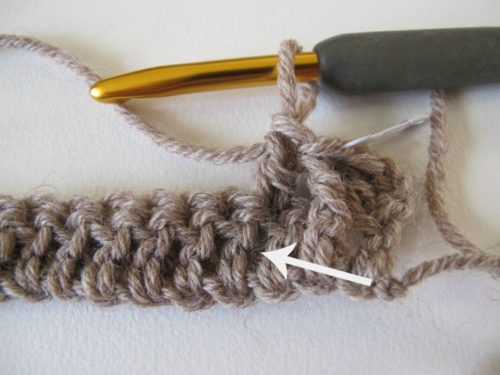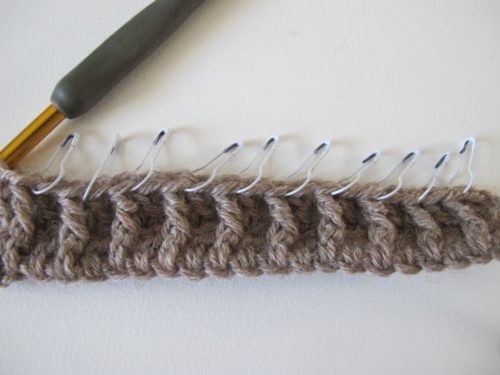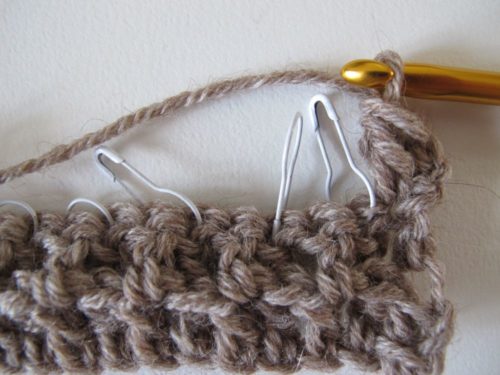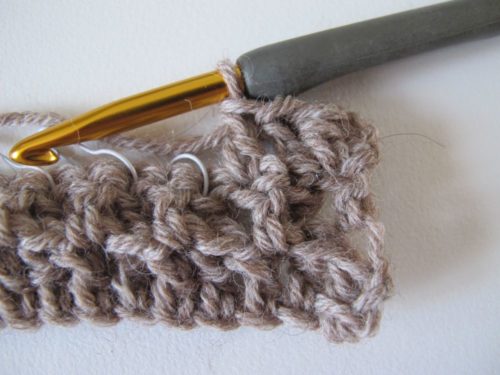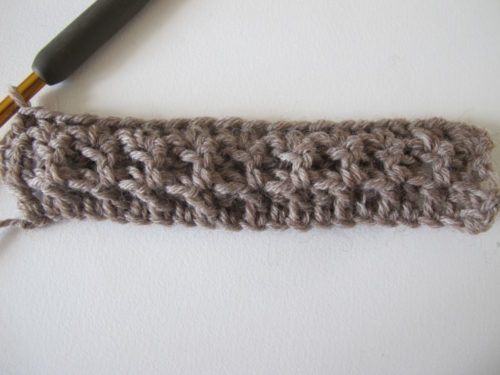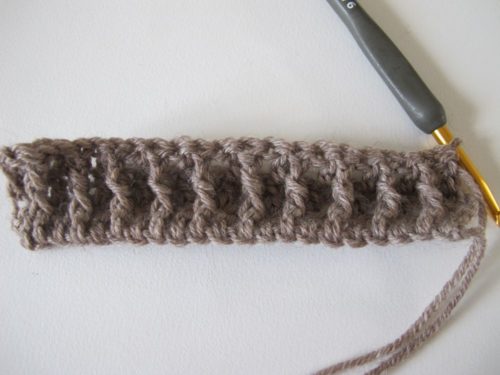I don’t know why, but post stitches, and particularly post double crochets, have been popping up all around me these past few months. In projects, in my preparations for the crochet ribbing series (where I ended up not including them), in patterns and information all over the place…
At first, I thought: Oh well, I have already discussed post stitches in the newsletter. And that’s true. But that was… 5 years and many, many stitches and subscribers ago.
So I take the liberty of discussing this topic again, since I find it interesting. I hope you will, too!
Of course, we will start with the basics. In this newsletter, I will concentrate on double crochet post stitches, but you can apply the ideas and techniques to other stitches as well. Do feel free to experiment!
What makes a post stitch different is the point in your work where you will insert your hook to make your stitch – here, a double crochet. To make a « classic » double crochet you insert your hook in the top of the stitch in the previous row (1). To make a post stitch, you insert your hook so that it goes under or over the body of the stitch in the previous row (2).
You can do this in two different ways. The first way is to insert your hook from front to back to the right of the dc in the row below and out again, from back to front, to the left of the same dc. This is the front post double crochet (FPdc).
The other way is to place the tip of your hook behind the work and insert it from back to front to the right of the dc in the row below and immediately from front to back to the left of the same stitch. This is the back post double crochet (BPdc) – admittedly not overly photogenic before completion.
As always, the front of the work is the side facing you, and the back of the work is the side turned away from you (not to be confused with the « wrong side » and the « right side »).
The effect obtained by using these two different types of post double crochet is very different. This is a dc swatch in which every second stitch is an FPdc.
And here is a swatch in which every second stitch is a BPdc. You’re right, it’s less spectacular! The BPdc’s form horizontal lines between the classic dc’s.
This is actually the two sides of the same swatch – but to understand how that works, we must go into the details of post dc’s.
Here is our swatch. We are going to start row 2 and work an FPdc in every second stitch. The selvage stitches are always classic dc’s.
The FPdc is worked like any other dc, just around the body of the stitch in the row below.
Finish the stitch as for any dc – yo and pull through two loops twice.
The next stitch is a classic dc.
When you begin it might be hard to distinguish the two kinds of stitches. Feel free to place a small marker in each FPdc as you work them.
The arrow indicates where you should insert your hook for the next FPdc.
Alternate FPdc’s and classic dc’s to the end of row.
Let’s turn!
On the next row, we are going to work a BPdc in every other stitch, aligning them to the FPdc in the previous row by working a classic dc in every classic dc and a BPdc in every FPdc in the previous row.
We have placed stitch markers in the post stitches in the previous row.
Another way to tell the difference between post stitches and other stitches is to look at the « feet » of the stitches. Post stitches are worked around other stitches, so you can’t see their feet.
The dc’s where you can see the entire stitch, including the feet, are the classic dc’s.
So let’s make a BPdc in each post stitch (see how above).
And when we turn the work…
… the BPdc’s made on the wrong side row look like FPdc’s on the right side.
What do you think of post stitches? Do you like them? Do you use them? Let me know in the comments below!
See you soon,

